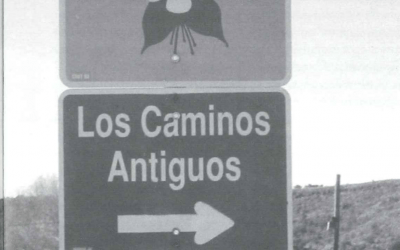Ecotourism in Chile
From the point of view of a scientist, the worldwide surge in ecotourism is a mixed blessing. On the one hand, who can deny that interest and exposure to nature ecosystems provides an important opportunity for educating the importance of conservation of biotic and natural resources. Yet because many of us rely on these same environments for our scientific work, it is natural to feel in competition with the ecotourists. A hundred thousand well meaning but uninformed boots tramping through a delicate habitat can render it useless for most scientific purposes as well as destroy its value for conservation. With protected areas growing ever fewer, we fear the environmental costs associated with the infrastructure required to support ecotourism. To make this increased access “worthwhile,” it is essential that the educational benefits of increased visitation outweigh the associated environmental costs. Thus, we worry most of all that ecotourism will become synonymous with recreation, with rafting and bungee-jumping supplanting any real exposure to the ecology of these natural areas.
The majority of my time in Chile has been spent in the Atacama Desert, at Parque Nacional Pan de Azúcar. There, as part of a research collaboration that stretches back over two decades and involves scientists from both the U.S. and Chile, I contribute to studies on the physiological and structural adaptations that allow plants to live in this driest place on earth that still supports plant life. Led by the efforts of Harvard graduate student Matthew Thompson and Beatriz Palma, a professor at Chile’s Universidad de las Americas, we are trying to understand the water economy of Nolana mollis, an extremely unusual desert shrub. Rain is rare at this site, typically occurring as part of the El Niño shift in sea surface temperatures and thus rainfall patterns. Thus, the period between rainfall events is on the order of several (up to 10) years and is extremely unpredictable. Most of the plants at this site are either cacti (who can survive long droughts due to their ability to store water in their thick stems) or restricted to the fog belt that forms at elevations along the coast at about 500 m. Nolana is unusual because it grows side-by-side with the hardiest of cacti and yet has no apparent water storage reservoir and maintains green leaves and delicate flowers despite the fact that it may not have rained for years! Its secret lies in its ability to reduce its need for water by a clever use of salt. By secreting salt mined from the soil onto its leaf surfaces, Nolana is able to condense water from the atmosphere and thus keep its leaves in a humid boundary layer, reducing its need to extract water from the very dry soil.
Our study of this unique plant has been possible because of the logistic and technical support provided by CONAF (Corporación Nacional de Forestales) and the fact that this park receives few visitors. Because the time between rainfalls can be several years, understanding this ecosystem requires long-term monitoring. We have been able to run sophisticated, long-term experiments in this park without fear of our equipment being “modified” by a curious ecotourist, as well as to return year after year to monitor various populations without having to factor in the possibility of human disturbance. Pan de Azúcar is a breathtakingly beautiful park. The mountains along the northern coast of Chile create dramatic landscapes, offshore islands support breeding populations of penguins, and the plant life is extraordinary. However, from my point of view one of the best things about this site is that we have it nearly all to ourselves.
Therein lies the dilemma facing scientists working in undisturbed, pristine habitats. If more knowledge about this delicate yet tough desert ecosystem were readily available, it is likely that visitation might substantially increase. Do we keep our understanding of these ecosystems locked away in academic journals (as safe a place as anyone could imagine!) or do we try to use our knowledge to encourage visitors knowing that once started we might not be able to control the onslaught. My fears of Nolana being “loved” to death are probably a bit extreme, but the fact that increased human visitation will leave a mark on the environment cannot be denied. Nor can I shake off my concern that quiet walks among the cacti in the hopes of coming upon a herd of grazing guanaco will give way to the thrills of “outdoor adventure” rather than ecological tourism. Yet the answer to both of these concerns is to increase the quality and quantity of ecological information available to tourists, as well as to use scientific knowledge to develop resource management plans to minimize the damage of increased visitation.
During the 1990s, the number of visitors to Chile’s 31 National Parks and 15 national monuments increased by 32%, topping a million visitors in 2000. The need to promote expanded capacity for ecotourism in Chile led in 1996 to the establishment of a National System of Protected Wildland Areas or SNAPSE (Sistema Nacional de Áreas Silvestres Protegidas del Estado Chileno). The system seeks to improve tourist access to national parks and reserves by promoting partnerships for the development of hotels and other recreation facilities while maintaining the natural values that visitors seek. While core funding for SNAPSE comes from the Chilean government, the development of new infrastructure to promote tourism in national parks and reserves must come from partnerships with private interests. The enabling legislation creating SNAPSE established specific guidelines for private development projects in protected areas. These guidelines state that projects must be carried out in harmony with existing park management plans, provide new or improved services to attract a broader segment of tourists, allow for the economic participation of surrounding rural populations, and preserve the environmental quality of the protected area. Private development projects meeting these projects are eligible for 20-35 year leases within national parks and reserves.
Can such partnerships with private interests include a mechanism to harness the input of scientists to both promote and guard against ecotourism? The new Pumalin Park in southern Chile represents a unique example of a private-public partnership to promote conservation and environmental education. The establishment of this park, conceived and financed by Douglas Tompkins of the United States, protects nearly 1200 mi2 of highly threatened habitat of lush austral forest. Persevering over numerous political hurdles, Pumalin has demonstrated the contributions that private individuals can make to preserving ecological diversity and opening private areas to public access.
A few years ago I had the opportunity to visit Chile as an “ecotourist.” With no scientific agenda, my goal was purely to make my acquaintance of the Southern conifers—living relatives of the plants that dominated the earth during the age of the dinosaurs. I was drawn to Chile because it is the only place in South America where one can find representatives of all three families of the southern conifers. In addition, it allowed me the opportunity of some botanical time-travel. The forests of southern Chile consist of species assemblages that predate the breakup of the Gondwanan continent. Thus, to walk beneath a mixed canopy of Auracaria mixed with Nothofagus and Drimys is to imagine an ancient land, when the flowering plants were beginning their rise and the conifers still held sway across the earth.
The excellent national park system of Chile meant that my tree-watching expedition was an easy success. I found towering stands of Fitzroyea, a species in which individuals can live for almost 4,000 years. I walked through glades of Saxegothea, puzzling over the way their hollow trunks become filled with roots growing from the inside of the stem. And I found the most charismatic of conifers, Auracaria aurucana, on the slopes of Volcán Llaima. We know from fossils that this genus was once extremely widespread, leaving behind petrified woods in Arizona and amber deposits in regions around the globe. Today Auracaria occurs only in Chile, one small region in Brazil, a few places in Australia, and New Caledonia.
However, I learned much more than about these trees. Although I thoroughly enjoyed my sojourn as an ecotourist, I was struck by the limited information on the natural history of these regions available to the average visitor. Chile—with its wide range of natural habitats and floristic diversity offers a fabulous opportunity to combine recreation with environmental education. Yet there were no natural history guides or other literature to aid in interpreting and appreciating these ecosystems and even I, a professional botanist, felt their absence. This experience and others has led me and my colleagues to consider seriously what our role should be in addressing this deficiency in a manner that best supports the conservation and education goals that should be at the heart of ecotourism.
Beatriz Palma is a professor at Universidad de las Americas in Chile. She was a Luksic Visiting Scholar at DRCLAS. N. Michele Holbrook is a Professor of Organismic and Evolutionary Biology at Harvard University, as well as a member of the DRCLAS executive committee. Ángel Lazo Álvarez works for the Corporación Nacional Forestal (CONAF) in Santiago, Chile. Philip Rundel is a professor of biology at the University of California, Los Angeles.
Related Articles
Editor’s Letter: Tourism
Ellen Schneider’s description of Sandinista leader Daniel Ortega in her provocative article on Nicaraguan democracy sent me scurrying to my oversized scrapbooks of newspaper articles. I wanted to show her that rather than being perceived as a caudillo
Recreating Chican@ Enclaves
Centrally located between southern Colorado and northern New Mexico, is a hundred-mile long by seventy-mile wide intermountain basin known as the San Luis Valley. Surrounded on the east …
Tourist Photography’s Fictional Conquest
Recently, while walking across the Harvard campus, I was stopped by two tourists with a camera. They asked me if I would take a picture of them beside the words “HARVARD LAW SCHOOL,” …




